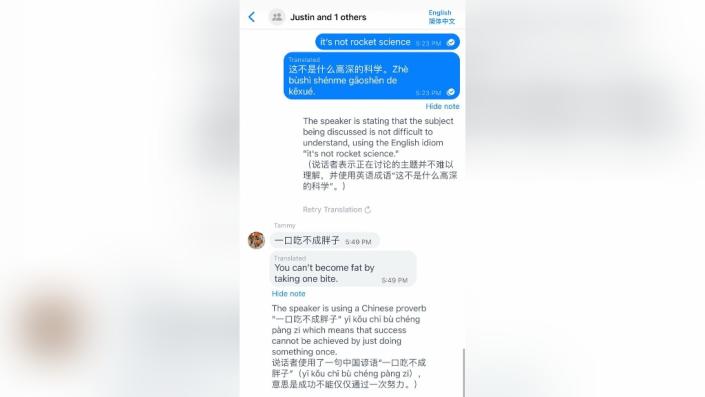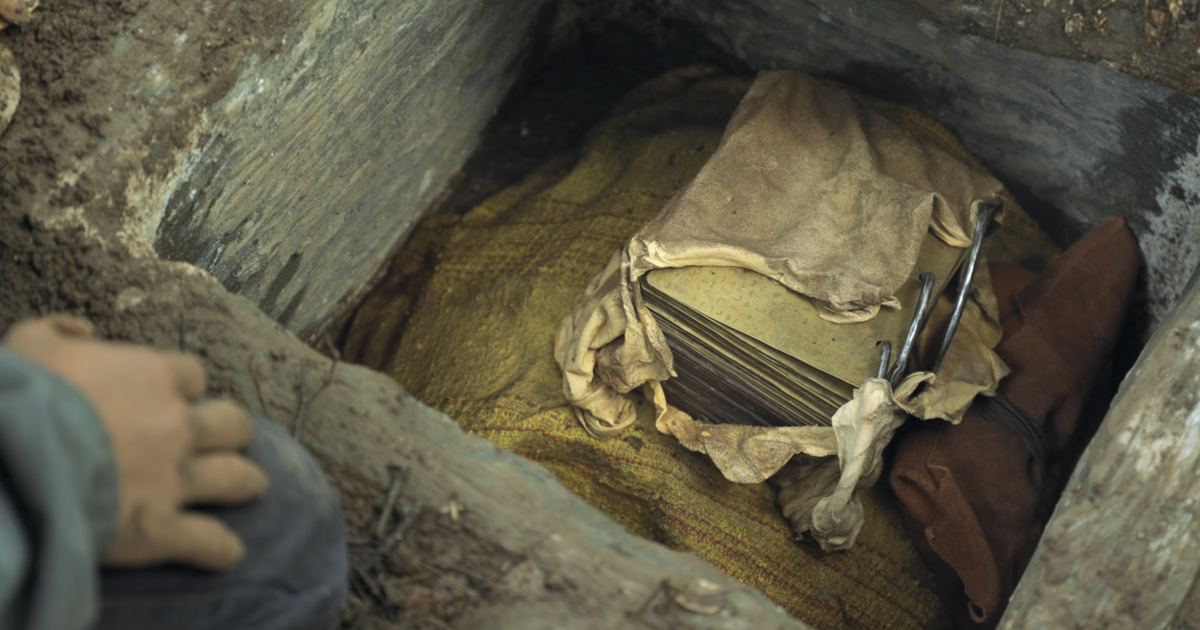Just by examining the text of the Book of Mormon and Joseph Smith’s account of the angel Moroni appearing in his room, one might come to several conclusions about how the translation of the gold plates took place:
- God had prepared sacred stones to be used by a future seer to translate the book (Alma 37:23; Mosiah 28:13).
- A seer would use these stones by looking at or into them (Mosiah 8:13).
- There were at least two (if not three) separate translation devices designed by God to be used for the translation of unknown languages: the two stones given to the brother of Jared (Ether 3:23), the two stones used by Mosiah (Mosiah 28:13),1 and the single stone, Gazelem, mentioned in Alma (Alma 37:23).
- According to Alma 37, the stones, like the other Jaredite stones, apparently functioned by shining in the darkness (though this conclusion is less certain than the first three points).
With these descriptions of translation and the seer stones from the Book of Mormon in mind, it would be helpful to turn our attention to what the witnesses and scribes of the translation of the gold plates said about the process from their experience and understanding.
During the early months of translation, Emma Hale and Martin Harris served as Joseph’s principal scribes. Both provided several accounts of what it was like to be involved in the miraculous process. According to Emma, the method of translation was quite different than most modern Latter-day Saints initially assume it was or than what has been occasionally depicted in popular Latter-day Saint art. According to Emma, Joseph did not have the gold plates open in front of him as he ran his finger down the leaf, nor did he place the seer stones over the characters on the plates in order to read them. Rather, she explained, “I frequently wrote day after day, often sitting at the table close by him, he sitting with his face buried in his hat, with the stone in it, and dictating hour after hour with nothing between us.”
While she made a point of saying there was no sheet or divider between them as they translated, Emma also affirmed that the plates themselves remained covered during the process, which explains why she did not ever see the plates even though she sat across the table from Joseph while he was translating: “The plates often lay on the table without any attempt at concealment, wrapped in a small linen tablecloth, which I had given him to fold them in. I once felt of the plates, as they thus lay on the table, tracing their outline and shape. They seemed to be pliable like thick paper, and would rustle with a metallic sound when the edges were moved by the thumb, as one does sometimes thumb the edges of a book.”
As odd as that explanation seems to some modern Latter-day Saints who have pictured Joseph looking directly at the plates while he translated, perhaps the most startling aspect of her description was that Joseph placed the seer stone or stones into a hat and looked into the hat while translating. This seemingly strange and unexpected description has given fodder for others to mock and belittle the process and often bewilders believers who cannot comprehend the reason for translating this way.
However, the witnesses of the translation were neither ashamed nor baffled by the use of the hat as a tool to aid the translation process. They explained that Joseph Smith needed to make the area around the seer stones dark so he could see the writing that would appear on the stones. For instance, Joseph Knight Sr., one of the few friends Joseph Smith had during this early period of translation, explained that the purpose of the hat was to block out the ambient light in the room in order to see the words as they appeared on the seer stones: “Now the way he [Joseph] translated was he put the Urim and Thummim into his hat and darkened his Eyes. Then he would take a sentence and it would appear in bright Roman letters. Then he would tell the writer and he would write it. Then that would go away [and] the next sentence would come and so on. But if it was not spelled right it would not go away till it was right. So we see it was marvelous [and] thus was the whole translated.”2
▶You may also like: 4 Hebrew translations that help us see the Savior more clearly in the Book of Mormon
Not only was David Whitmer one of the Three Witnesses of the Book of Mormon, but he was also present in his father’s home, where much of the translation took place, apparently without any attempt to conceal the activity. He was unaware of Joseph Knight’s description of the process, yet David provided a very similar observation. He also clarified that when placing the stone in the hat, Joseph would close the brim around it to “exclude the light; and in the darkness the spiritual light would shine.”
Whitmer further explained that Joseph would see a character from the plates appear and underneath the character would be the translation in English. “Brother Joseph would,” he continued, “read off the English to Oliver Cowdery, who was his principal scribe, and when it was written down and repeated to Brother Joseph to see if it was correct, then it would disappear, and another character with the interpretation would appear.”³
While Oliver Cowdery provided a less-circulated or detailed description of the manner of translation, aside from mentioning the use of the “interpreters,” one very early source relates what Cowdery apparently said of the process. When Oliver Cowdery stopped to preach at a Shaker village in Ohio in 1830 on his way to preach to the American Indians in what is today Kansas, a local Shaker leader recorded Cowdery’s description of the process, which also involved Joseph Smith using a hat along with the seer stones.4
Cowdery also reportedly described the translation process to Josiah Jones, a local Kirtland resident and member of Baptist minister Sidney Rigdon’s congregation. While many of Rigdon’s parishioners followed their erstwhile preacher, embraced the Book of Mormon, and were baptized into the Church of Christ, Jones rejected the new religion. He wrote a small history of how his religious world was seemingly turned upside down overnight and included an account of his discussions with Oliver Cowdery and the other missionaries. Jones was told by the missionaries that Joseph Smith had found the gold plates and “had translated it by looking into a stone or two stones, when put into a dark place, which stones he said were found in the box with the plates. They affirmed while he looked through the stone spectacles another sat by and wrote what he told them, and thus the book was all written.” After asking Cowdery to give more details of the translation process, Cowdery reportedly explained “that Smith looked into or through the transparent stones to translate what was on the plates.”5
Martin Harris also described that as he served as a scribe for the translation of the gold plates, Joseph Smith translated by placing the seer stones into his hat.6 Indeed, at one point, Martin apparently decided to take a bold action with regard to the stones. Finding a stone that looked similar to the one Joseph was using to translate the gold plates, Martin surreptitiously swapped out the actual stone for the one he had found. When Joseph returned to translate, he found that the replacement stone did not provide the light of revelation and translation, but rather was “dark.” Martin explained that he had secretly changed out the stones in order to disprove the theory of critics who claimed Joseph was reading a manuscript tucked into the bottom of his hat instead of the words of a miraculous translation. In Martin’s reasoning, were Joseph merely pretending that the words appeared on the seer stone while actually reading this hidden manuscript, Joseph would have picked up the translation right where they had left off, even with the faux seer stone. That Joseph could not translate without the sacred stone demonstrated to Harris that the work was indeed miraculous.7
…
▶You may also like: Watch: The first photographic record of the original Book of Mormon manuscript
All of the witnesses of the translation describe Joseph using the seer stones or a single seer stone to translate the Book of Mormon, referring to them variously as interpreters, Urim and Thummim, spectacles, stones, crystals, etc. Several of these scribes and witnesses also affirmed that Joseph used more than one device during his translation. Emma Smith, for instance, explained, “Now the first that my husband translated, was translated by the use of the Urim, and Thummim, and that was the part that Martin Harris lost, after that he used a small stone, not exactly, black, but was rather a dark color.”8 As one of the main scribes of the translation of the gold plates, Emma’s description of the translation as miraculous and involving more than one device should be taken very seriously. …
While the seer stones were apparently integral to the work, so too was Joseph Smith’s spiritual preparation. If he was not properly humble and penitent, he could not translate. However the process actually took place, for believers the most important aspect of the translation of the gold plates is the published Book of Mormon, which stands as not only another witness of the resurrected Jesus Christ but also as evidence of Joseph Smith’s prophetic calling.
The Lord declared that the translation of the Book of Mormon was true, even as the process was still ongoing. He spoke peace to an uncertain Oliver Cowdery: “I tell thee these things as a witness unto thee—that the words or the work which thou hast been writing are true” (Doctrine and Covenants 6:17). Later, with the work nearly completed, the Lord proclaimed of the translation to the Three Witnesses, “As your Lord and your God liveth it is true” (Doctrine and Covenants 17:6). For believers, as interesting as the historical accounts of the translation of the gold plates might be, the words and teachings and doctrines of the Book of Mormon are the essential aspects of this great miracle, increasing faith in Christ, providing hope through His Atonement, and generating marvelous changes in hearts and lives.
- Lucy Mack Smith, history, 1845 manuscript, 69, Church History Library, available at “Lucy Mack Smith, History, 1845,” The Joseph Smith Papers, https://ift.tt/4Udkc3H.
- Smith, history, 1832, 4.
- “Church History,” Times and Seasons, March 1, 1842, available at The Joseph Smith Papers, https://ift.tt/3ZHVwIs.
- Smith, history, 1832, 4.
- Smith, history, 1832, 4.
- Joseph Smith, “Journal, 1835–1836,” 25 (November 9, 1836), The Joseph Smith Papers, https://ift.tt/X2LMrk5.
- “History, 1838–1856, volume A-1 [23 December 1805–30 August 1834],” 5, The Joseph Smith Papers, https://ift.tt/jeTyo7I .org/paper-summary/history-1838-1856-volume-a-1-23-december-1805-30-august-1834/1.
- See Steven C. Harper, “The Probation of a Teenage Seer: Joseph Smith’s Early Experiences with Moroni,” in The Coming Forth of the Book of Mormon: A Marvelous Work and a Wonder, ed. Dennis L. Largey, Andrew H. Hedges, John Hilton III, and Kerry Hull (Provo, UT: Religious Studies Center; Salt Lake City: Deseret Book, 2015), 33–35. Lucy Mack Smith wrote, “The thought flashed across his mind that there might be something more in the box that might would be a benefit to him in a pecuniary point of view.” Lucy Mack Smith, history, 1844–1845, p. [2], bk. 4, Church History Library, available at “Lucy Mack Smith, History, 1844–1845,” The Joseph Smith Papers, https://ift.tt/qmCFbWo.
Adblock test (Why?)




